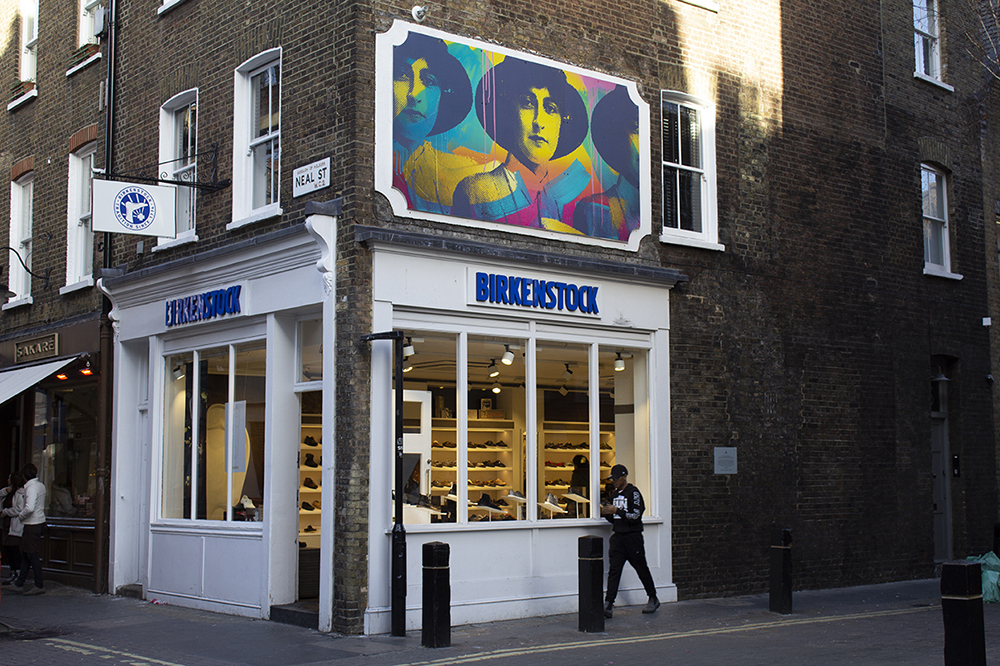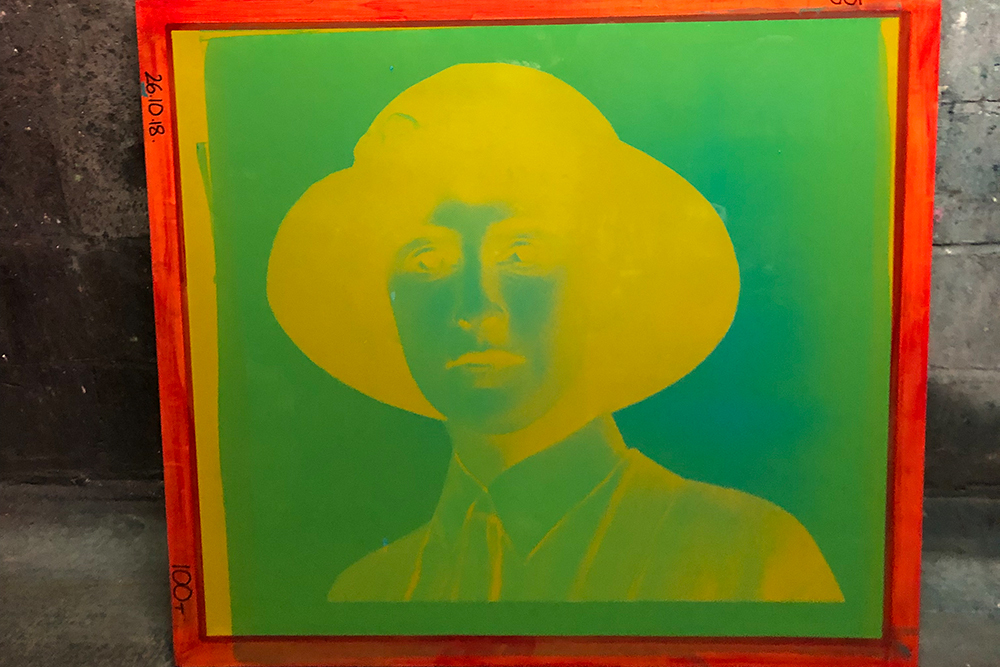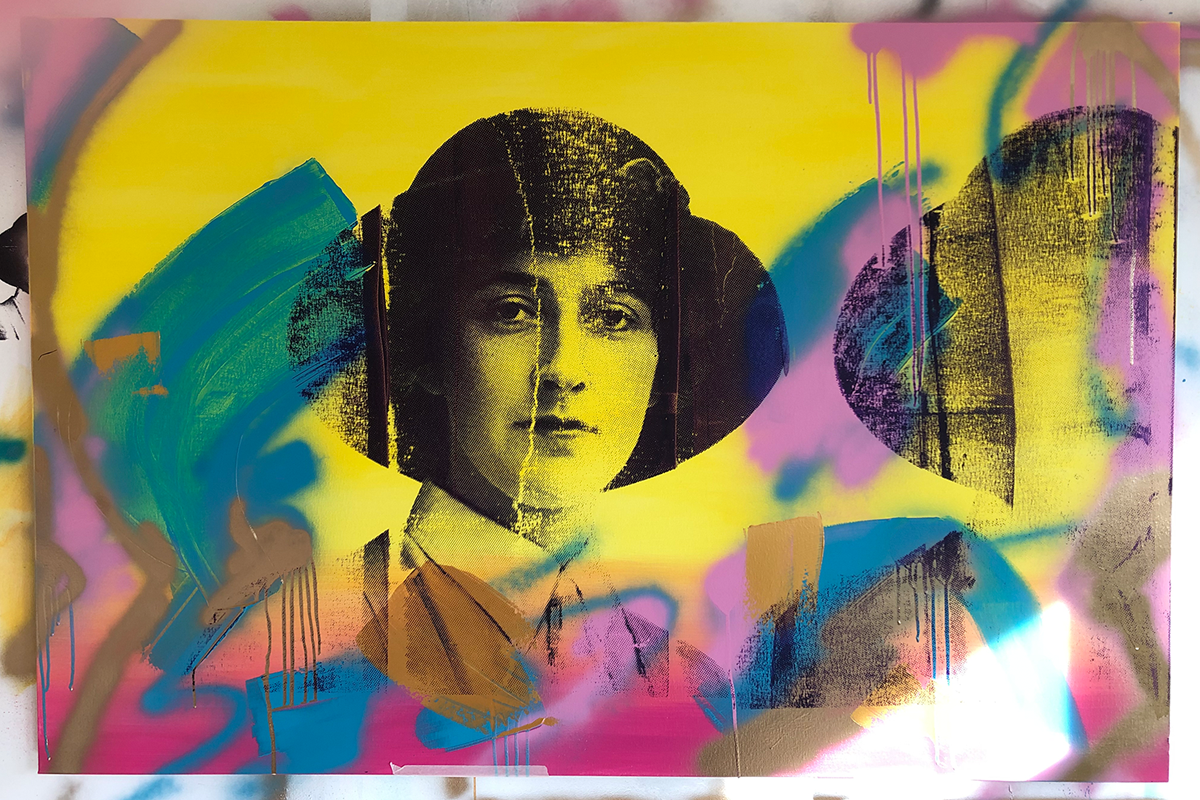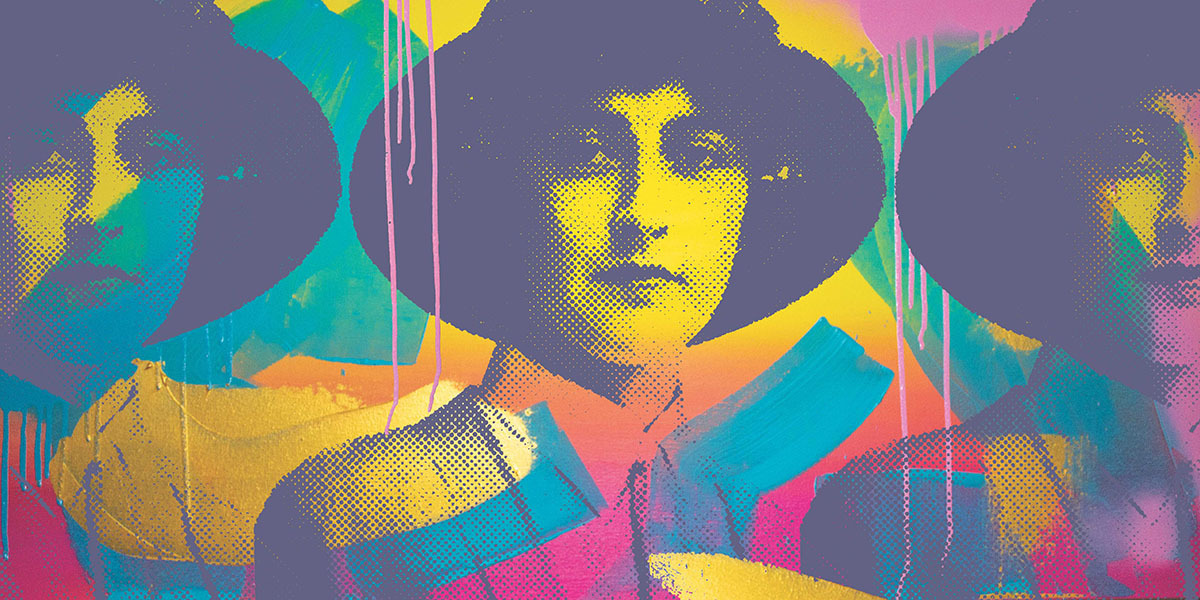Features
The Evolution of Agatha Christie: A Q&A with the Artist

In January, a marvellous mural arrived in London’s Seven Dials, just a stone’s throw from our office. Bright, striking, and contemporary, the piece was created by the talented Iona Rowland, and commissioned by the Seven Dials team. We caught up with the artist of this extraordinary piece.
Can you tell us a little about yourself and your work?
I am a London based artist making large scale immersive artworks for the public realm - I’m really passionate about making work which is accessible for all, both in terms of its subject matter and installation site. Works are built up using multiple layers of paint, spray and silk screen prints. Layers intersect and overlap one another, creating the illusion of three dimensions. As viewers move, the works appear to shift between 2D and 3D - it’s almost like wearing a VR headset. I hope that by creating paintings that are experiential, viewers feel part of the narrative of the artwork rather than a passive observer. One person who saw ‘The Evolution of Agatha Christie’ in Seven Dials messaged me on Instagram and said, ‘it was like a moment of parallax’. I love that.
How did this collaboration with Seven Dials come about?
Seven Dials approached me about the project in 2018 having seen my work on Instagram - they were looking to commission a portrait of Agatha Christie to celebrate 90 years since the publication of The Seven Dials Mystery. I was immediately brimming with ideas but wanted to research Christie’s life and work more thoroughly before getting started. Having visited the proposed site, I knew the work had to be totally captivating. I wanted people to stop in their tracks and think woah, who’s that, why is she there, is that a painting, or a photo, or a print. I hope it’s encouraged people to take a moment amidst the hustle and bustle of London life to immerse themselves in the work, ask questions and learn something new. The resounding theme uniting the artwork, subject and area is discovery. ‘To discover’ is to find something unexpectedly, and I think this really summarises the project.
Can you talk us through the creative approach for this piece?
The piece had to ‘pop’ so I started with small scale colour experiments. I wanted people to be able to differentiate between all of the layers, so I adopted different painterly approaches for each. For example, the background was a soft colour fade of pink blending into yellow, whilst the subsequent layer is formed of sharp blue marks made with palette knives and window scrapers. The next layer is improvised spray paint drips and marks.

Once I’d decided on my palette, I scaled up the artwork and began working on large scale pieces in the studio - I worked on four paintings at the same time. There is always an element of risk with my process so I like to work on multiples. I built up layers and layers of acrylic and spray paint. The works at this stage were still totally abstract.
The next step was to silk screen the portraits of Agatha Christie over the top of the abstract composition. I worked with an image of a young Agatha, taken in 1926. The image was half-toned (broken down into tiny dots) and exposed onto a huge screen at Print Club London in Hackney.

The screen was taken back to the studio where I began printing. I tend to use a variety of objects to pull ink through the screen, so the density of ink varies in each portrait. I wanted each print of Agatha to differ - a nod to her multi-faceted nature of the female experience, but also of Agatha herself.

After screen printing the portraits, I worked back into the paintings - adding depth to the figurative elements and additional spray paint drips and marks. For me, it’s all about contrast and juxtaposition - these elements are what really make the piece ‘pop’ and give the illusion of three dimensions.
Why did you choose this photo of Agatha Christie?
I wanted to depict a young Agatha Christie on the brink of greatness - we often see images of her later in life after solidifying her literary voice. The photograph I worked from was taken in 1926. Though she had published several novels, she was not yet the prolific author we have come to know. I think it’s important that young people see iconic or inspirational figures in relatable contexts and think ‘if they can do it, so can I.’ The objective of all of my works is to inspire and empower.
What did you learn about Christie when undertaking the project?
For me, Agatha Christie has always been iconic, but I didn’t know quite how prolific she was. 66 detective novels, 14 short story collections and billions of copies of books sold - it shows an unwavering commitment, focus and love for her craft. To think alongside this, she was also a surfer, explorer, and volunteer at University College Hospital. She was completely dynamic and refused to be put in a box - she lived life the way she wanted to live it. What an inspiration.
Did anything about your discoveries surprise you?
I was very surprised to learn about her surfing abilities - I read that she learned to surf in South Africa and then in Waikiki and was one of the first Britons to surf standing up. I’m an avid (but not very good) surfer so next time I hit the waves in Peniche, I will think of Agatha.
What inspires you?
Visual culture in London inspires me constantly. The streets are flooded with imagery and brands which appear to move with the pace of the city itself. Think about the huge digital billboard on Piccadilly Circus - the ads move so quickly, evolving, mutating - always just out of grasp. Perhaps it’s this fascination with image curation on the streets of London which has led me to making work for public spaces.
What is next for you as an artist?
Creating artworks for public spaces is my focus at the moment - I want to make art which is accessible for all, with subject matter that really resonates with and inspires viewers. I’m interested in how the context of an artwork can create new narratives around the work, connecting diverse audiences and seemingly disparate disciplines. For example, my latest mural at Boom Cycle in Battersea Power Station explores the link between art and fitness; and my next project, which will be unveiled in April 2019 at Pride Park Stadium in Derby, is a celebration of Derby’s rave culture in the nineties. I hope the artworks will continue to facilitate new conversations and relationships.
And finally, what is your favourite Agatha Christie story?
It’s got to be Murder on the Orient Express - when reading the novel, I imagine Agatha Christie making her first journey on The Orient Express, looking out of the window and being bombarded with ideas for the novel. I nearly always come up with ideas for paintings while on the train or make notes of ideas of for new projects or collaborations. It offers a moment to reflect on your experiences and upcoming adventures.



 UK
UK 